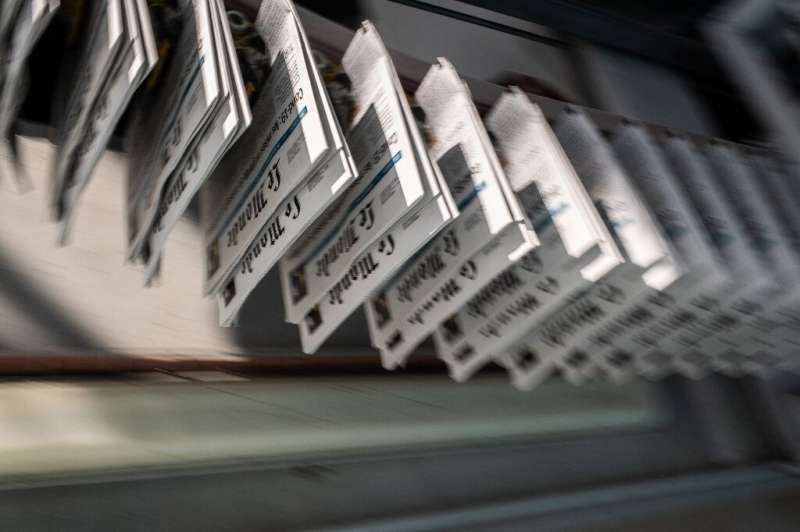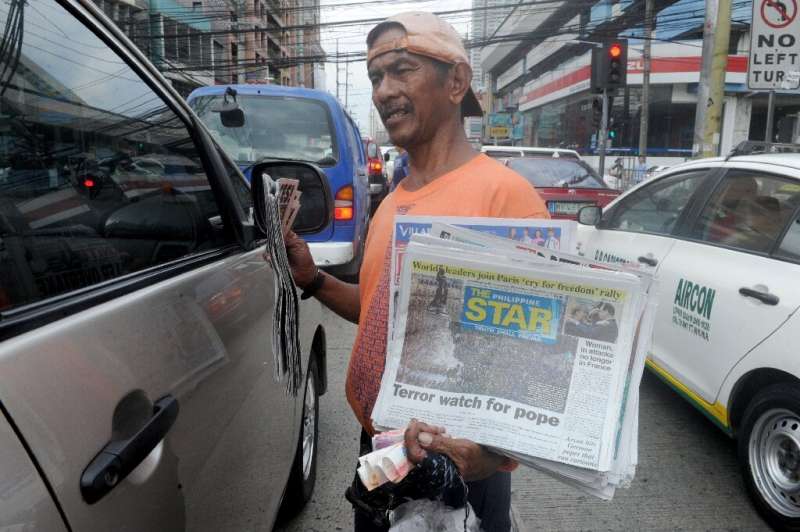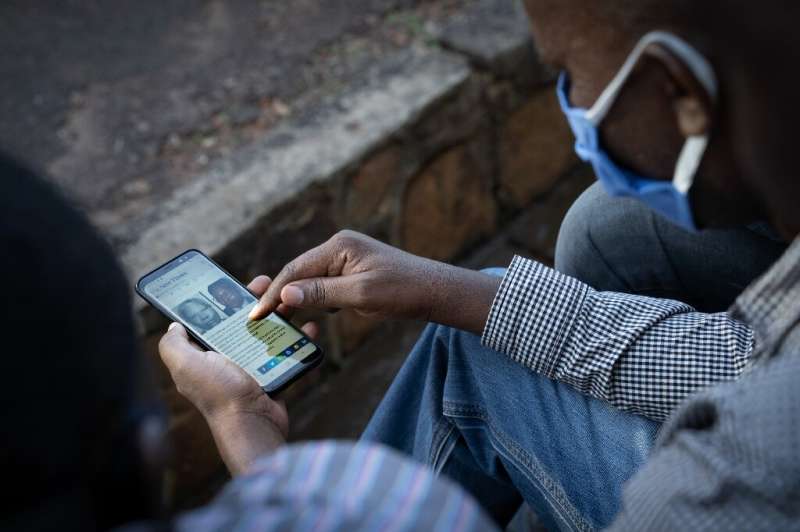Jobs all along the newspaper production chain are at risk, from printers and paper makers to journalists
The coronavirus crisis has weighed heavily on print newspapers already battling for survival around the world, with the number of copies sold tumbling while less profitable digital readerships surge.
Simply delivering printed papers to the shops—or having customers come in to buy them—has become a challenge, worsening a years-long decline in sales and advertising revenue.
"Consumption of printed newspapers has fallen as lockdowns undermine physical distribution, almost certainly accelerating the shift to an all-digital future," the Reuters Institute's 2020 annual report said.
Major dailies in Brazil and Mexico have already switched to online-only or dropped some days' editions, while in the Philippines 10 of the 70 newspapers in the PPI association have shuttered.
"Times are hard. There are no advertisers and no-one is reading us," PPI executive director Ariel Sebellino told AFP.
The archipelago nation's small local newspapers were hardest hit during lockdown as street sales tumbled.
"The industry is under siege and we've all taken bruises," Sebellino said.
Far from affecting only journalists, the disappearance of print papers deals out pain all up the production chain, taking in printers, paper makers and delivery people.
Major British media brands could boast of 6.6 million new online readers in the first quarter in what their industry association said was a new record.
Street sales are vital for Filipino newspapers but were hit hard by the virus crisis
But most have not seen the same bounce in print sales.
The coronavirus has become "the greatest threat to the global news industry since the 2008 economic crash" wrote industry publication Press Gazette—which itself moved online-only in 2013.
Between 2005 and 2018, some 250 local papers closed across Britain, while today one in three journalists' jobs are believed to be under threat.
'Fond memory'
The picture is similar in the US, where dozens of papers have closed or merged with local competitors since the crisis.
Between 2008 and 2019, half of all workers in American newspapers lost their jobs, according to a Pew institute count.
Around the world, audiences have melted away for the free sheets once handed out in busy urban centres.
Unable to count on funding from advertisers, some have paused publication, including Metro or Destak in Brazil or France's 20 Minutes.
With its ageing population used to holding a paper in their hands, Germany's newspaper publishers "were all making money before the coronavirus crisis, even if circulation figures kept falling," said Frank Ueberall, president of the DJV journalists' federation.
Not everyone is prepared to make the switch to consuming news online
"Things are different now," but "text journalism still has good days ahead," Ueberall said.
"Old people in particular are far from adopting digital technologies en masse."
"Printing is expensive, but it's swings and roundabouts," said Gilles Dechamps, head of a printing company in northern Paris, arguing that "it's important for readers and for advertisers to have the landmark" of a printed paper".
Despite efforts like cutting their size to save paper or investing in the web over the past 30 years, few papers have found the winning formula to make money from 21st-Century journalism.
"Even in the smallest markets, Facebook and Google syphon three-quarters of the digital revenue," said Penelope Abernathy, a former Wall Street Journal and New York Times vice-president who now teaches media economics at the University of North Carolina.
"That leaves all other legacy media fighting for the digital scraps."
Strong brands like the NYT may survive the transition, with the Grey Lady's digital revenues outstripping paper for the first time in the second quarter this year.
But the smaller fish may have to continue reducing their output and hiking prices to survive, with successful new magazine launches in recent years mostly targeting a niche audience.
"Print will survive in some form," Abernathy predicted, although likely more in weekly and monthly options than daily.
"The era of the print daily will be remembered fondly. The whole notion was capturing the history of the last 24 hours," she said.
© 2020 AFP


























